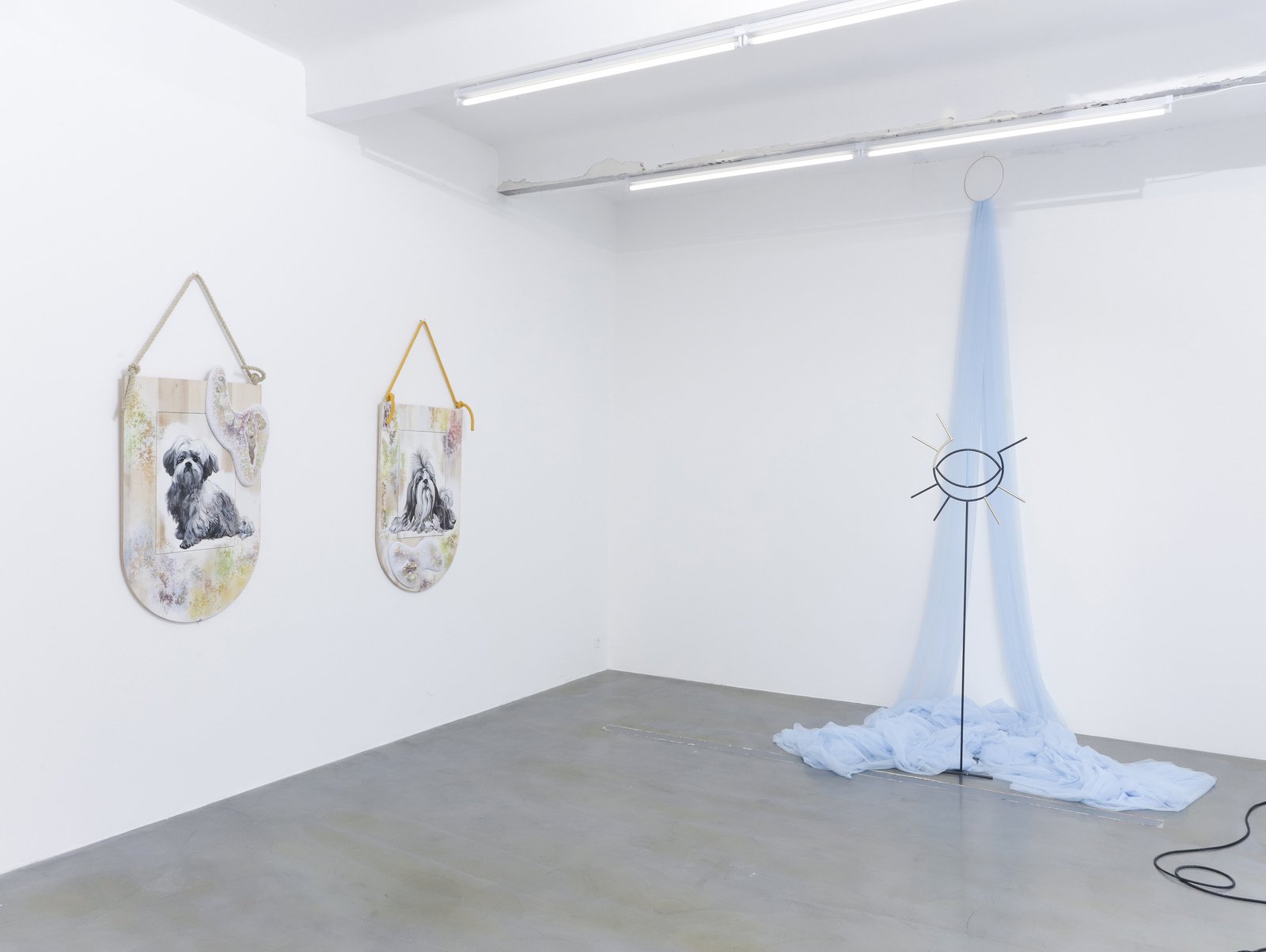Michal Stolárik
“Have you seen any red cars today?” These are the opening words of a viral video that has been trending online in recent months. “I probably did, yeah,” says the interviewee. “If I would have told you that for every red car you notice I will give you $50, would you know how many red cars you have seen on your way?” the tattooed host continues. “I’d look for red cars!” the man eagerly replies.
The Baader-Meinhof phenomenon, also known as the frequency illusion or the red car theory, is a cognitive bias related to the way our consciousness works and the way we perceive the world around us when we start to focus on certain things. Previously unnoticed details seem to be more present and much more frequent. It is as if we were experiencing a glitch in the matrix. In reality, it is not that there are more red cars on the road. It is simply that our brain started to notice them.

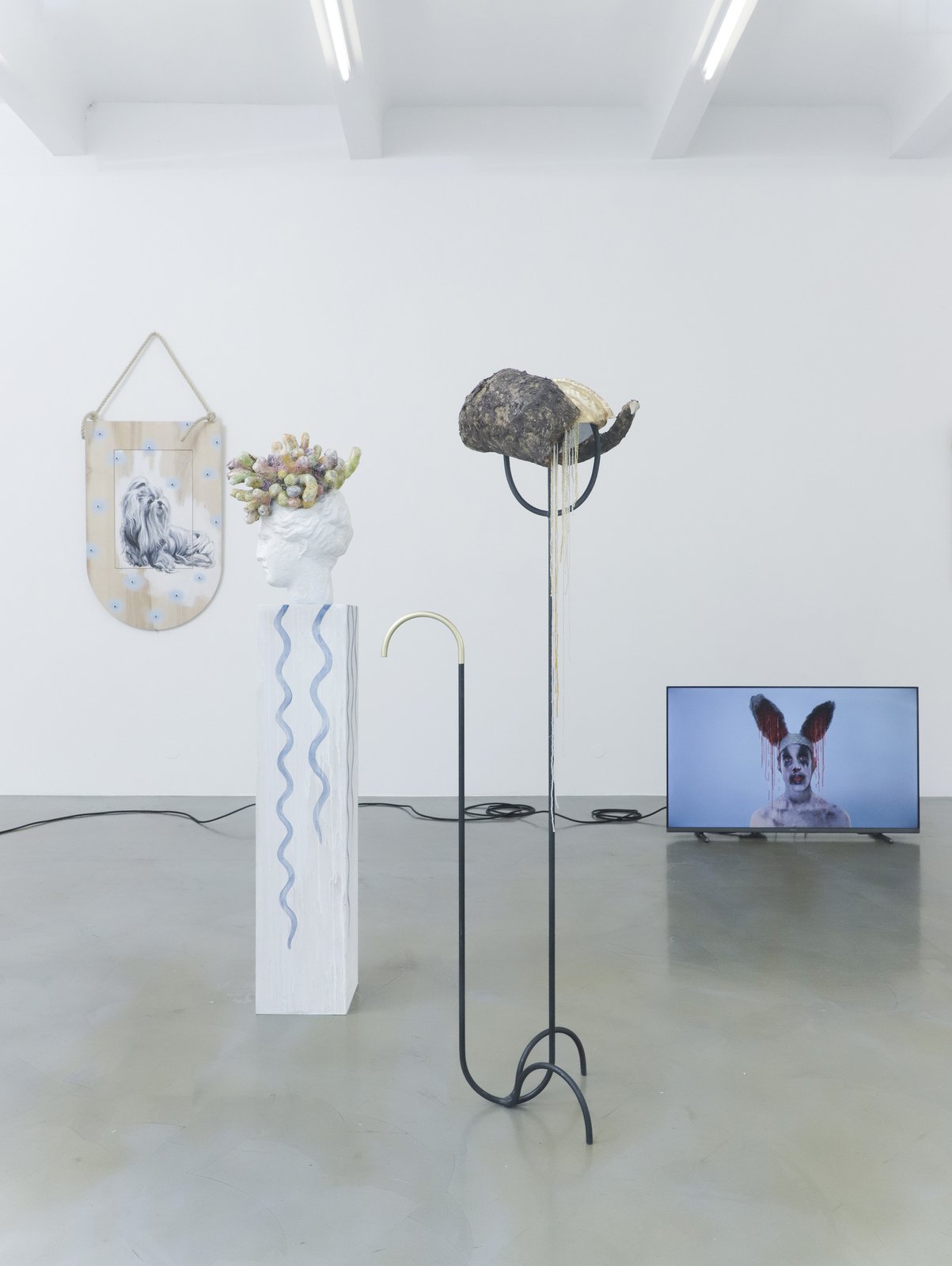
Nika Kupyrova is not looking for a car. She is looking for a little white dog. She discovered the first one long ago by chance, in Vladimir Nabokov’s novel Despair. There, a dog, or a disturbing imitation of one, appears in the dreams of the central character. A few years later, she meets another white dog, this time in Virginia Woolf’s Mrs Dalloway. Its presence in both texts is linked to a loss of control over reality and a distrust of one’s senses. The fall into the rabbit hole came next, and white dogs began to appear everywhere – in pop culture references, in paintings in galleries, or as part of internet memes. Kupyrova’s dog resembles Alice’s White Rabbit. It lures us, stimulates curiosity and guides us through a surreal world full of bizarre things. Cars, rabbits and dogs. Complicated? Hold your breath, it gets worse.
The first solo exhibition of the Vienna-based intermedia visual artist Nika Kupyrova at the Ravnikar Gallery is an entry into the world of imagination, association and distorted reality. Moving between echoes of the digital environment and raw handicraft, she has created an exhibition environment that offers different ideological foundations, formal and material results or technological processes. A coherent project linked by a subtle textile scenography through a surreal narrative, it raises issues related to artificial intelligence, the possibilities of collaboration, and reflects on the loss of control in the attempt to discern what is real.


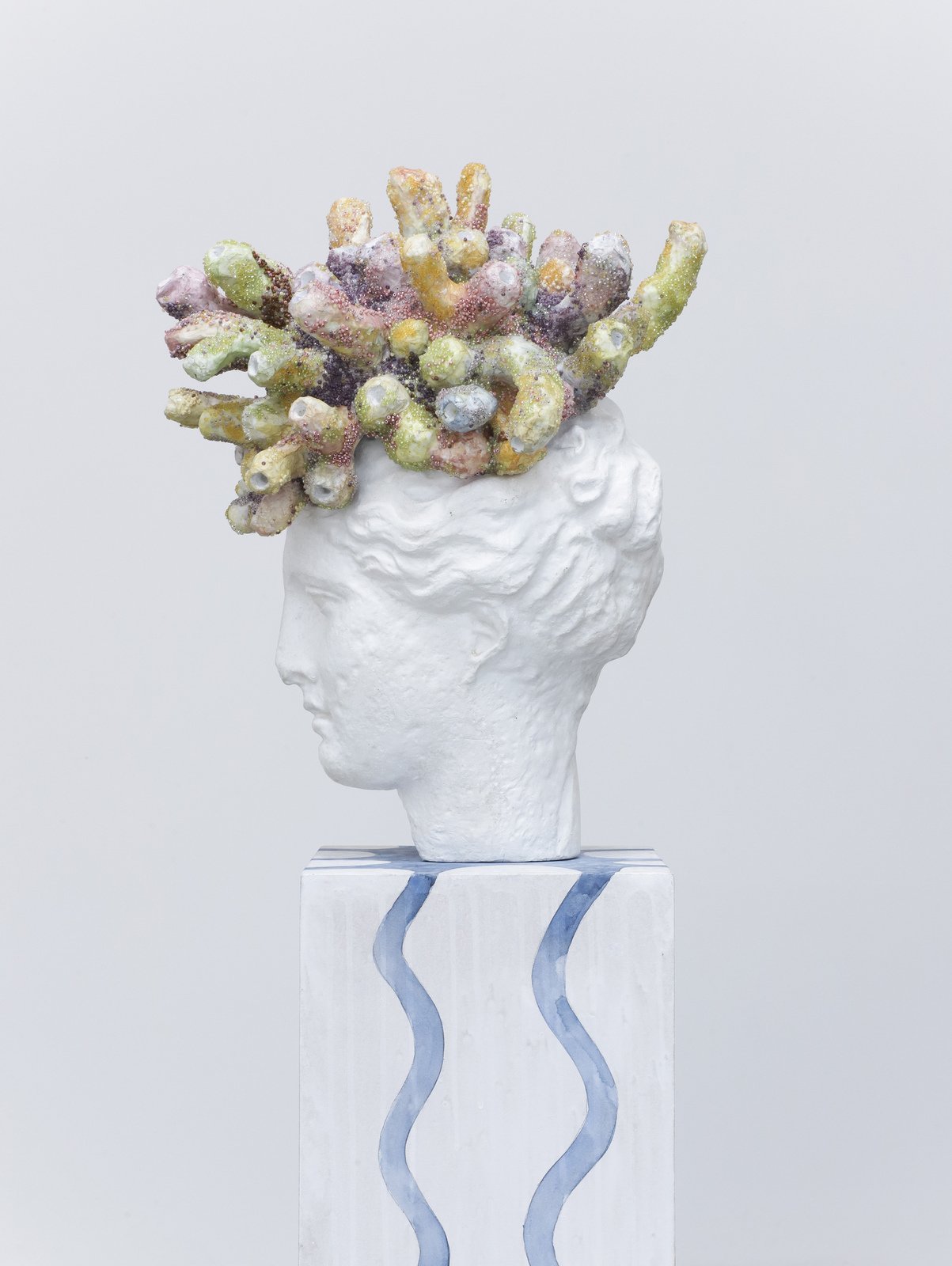
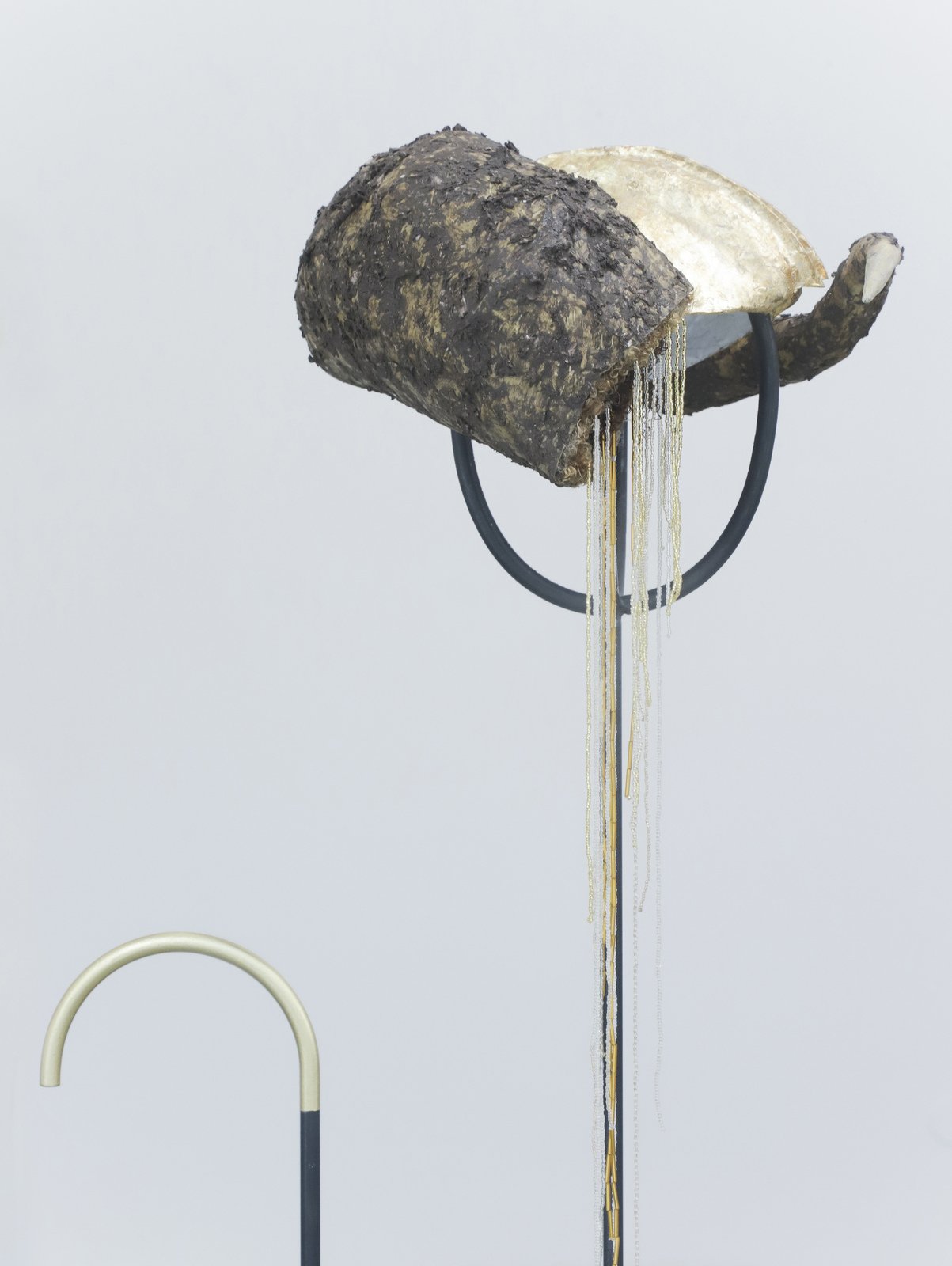
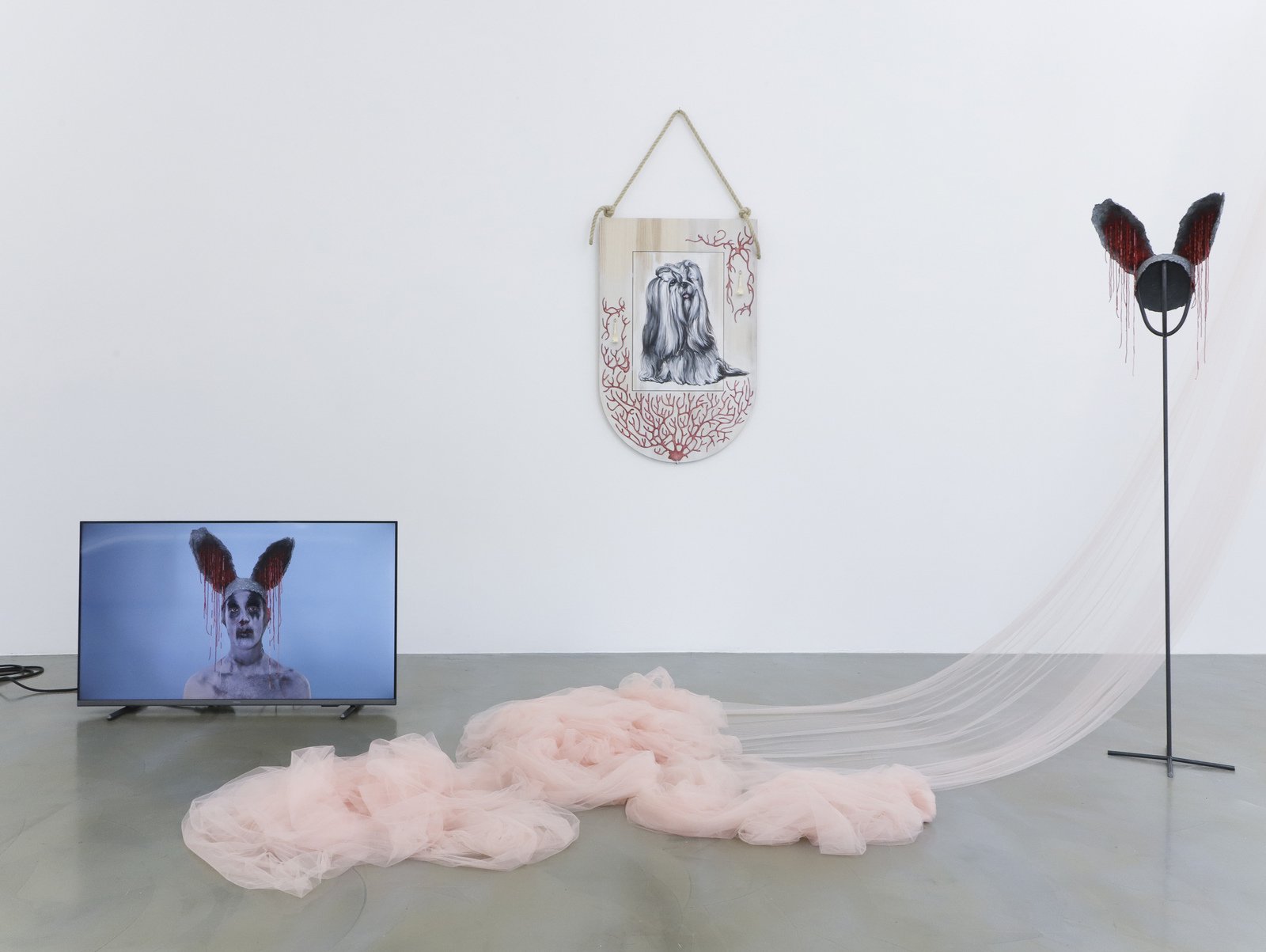
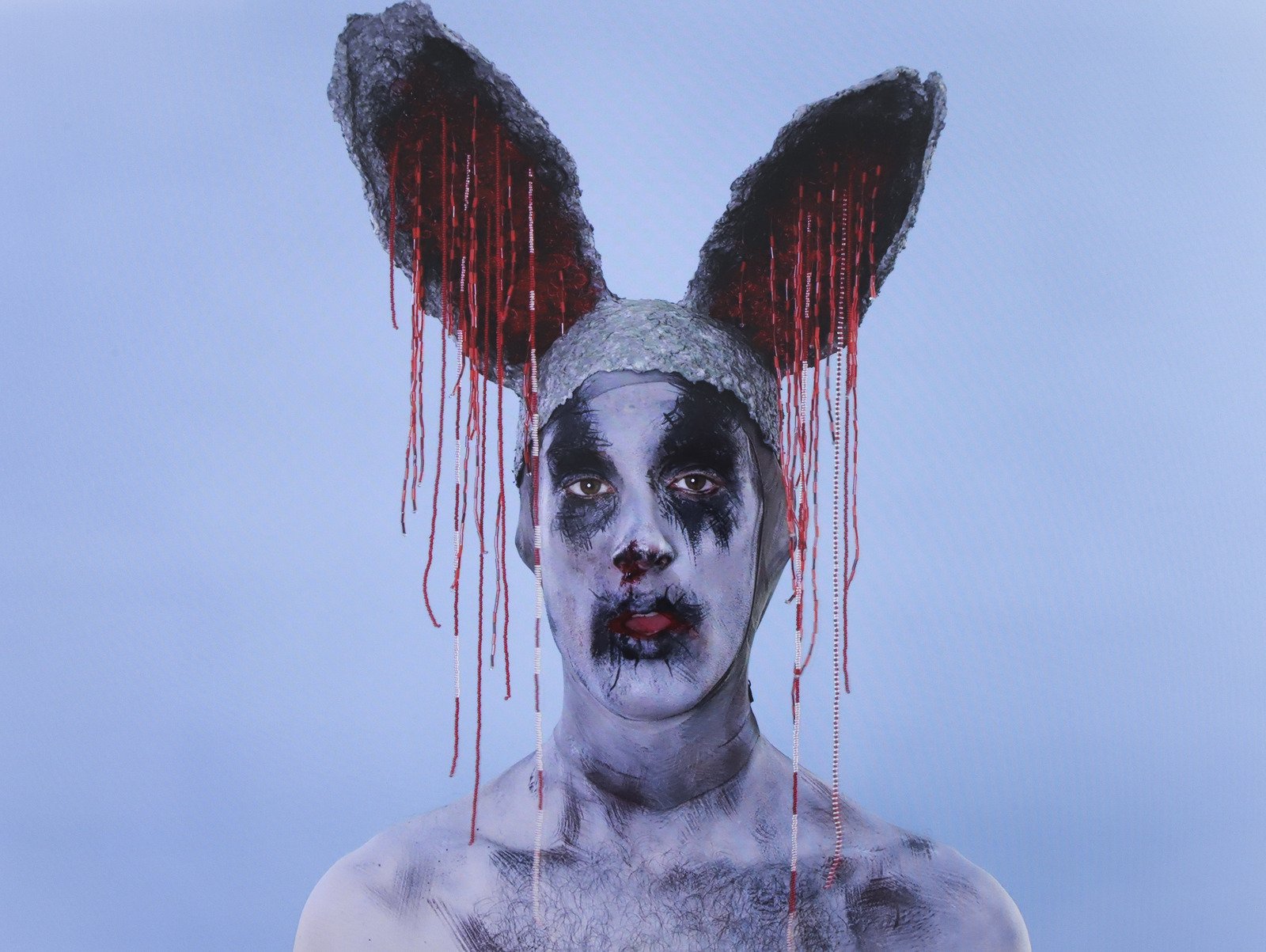
A series of hybrid hanging paintings features slightly bizarre portraits of white dogs on plywood. Nika Kupyrova’s first collaboration with her mother – the classically trained painter Irina Kupyrova – presents excerpts from an extensive archive of images found on the internet that are transferred onto panels which resemble stylised coats of arms. An intergenerational dialogue and different forms of collaboration run throughout the project. Nika Kupyrova complements the black-and-white acrylic brushstrokes with tiny beads or other ready-mades (such as doll’s eyes) and, together with organic papier-mâché objects, creates a dialogue of disparate realities.
What we are looking at, may not actually be as it appears at first glance. A two-channel video installation that deepens the cracks in our perception makes the central part of the spatial exhibition collage. We see two singing figures with expressive make-up and odd headgear resembling sea coral or rabbit ears. Or are they watching us? Yet their gazes are blank, as if not from this world. Perhaps they are just digital avatars generated by AI, opening their mouths in an unsynchronous manner to a cryptic soundtrack. The sirens’ imaginary song beckons us, hypnotizing, and we can’t take our eyes off the singing heads.
We are taken out of the dreamy audiovisual moment by the physical presence of small sculptures from the videos on custom-made metal pedestals. A selection from Kupyrova’s larger series of wearable objects entices us towards a haptic experience. Their raw, slightly playful form, created with papier-mâché techniques, is suddenly not so unsettling. Is it just a slightly extravagant hat, mask or avatar that offers the possibility of trying on a different identity? Where does fiction end and reality begin? And will it be possible to go back?


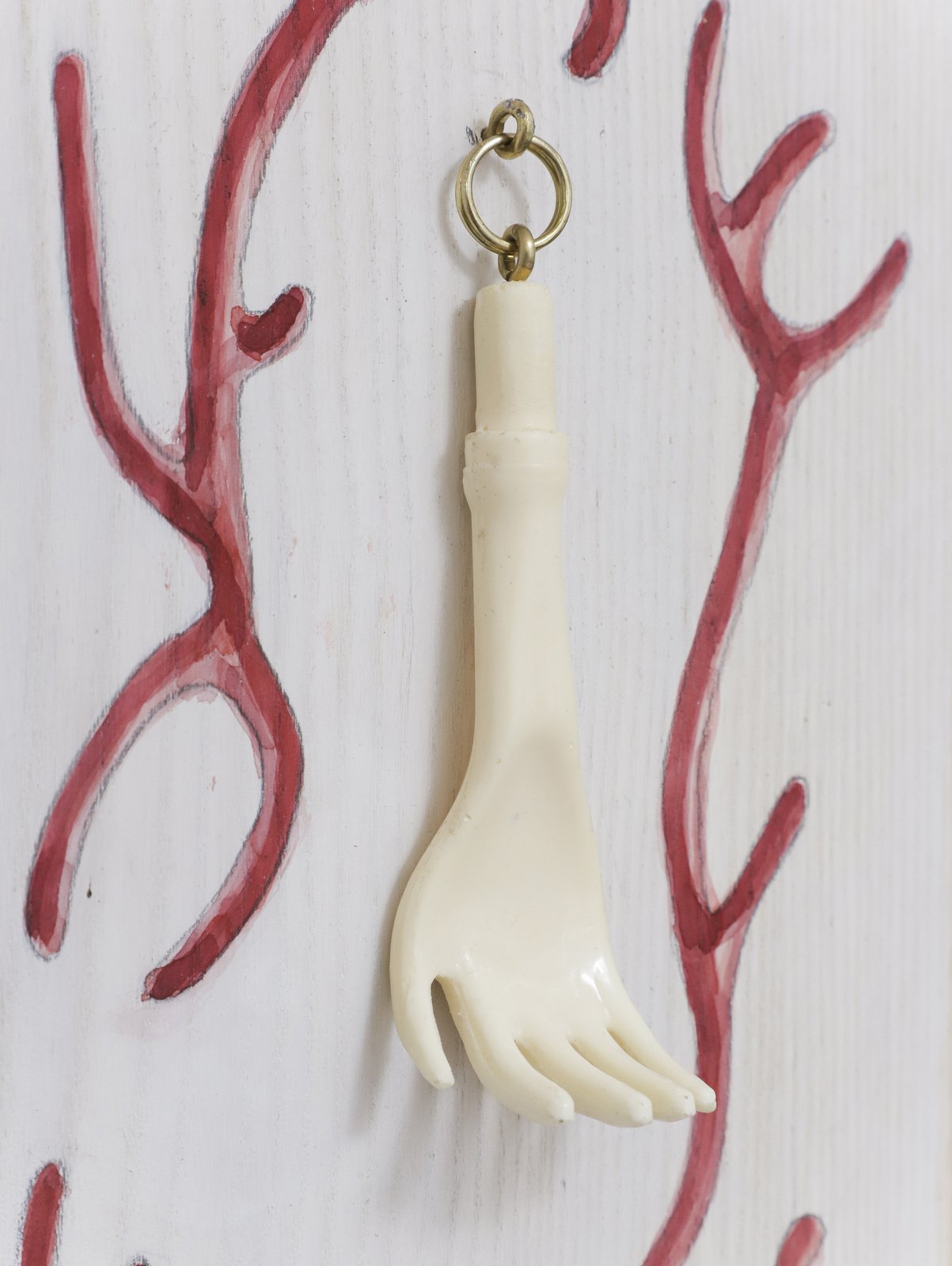
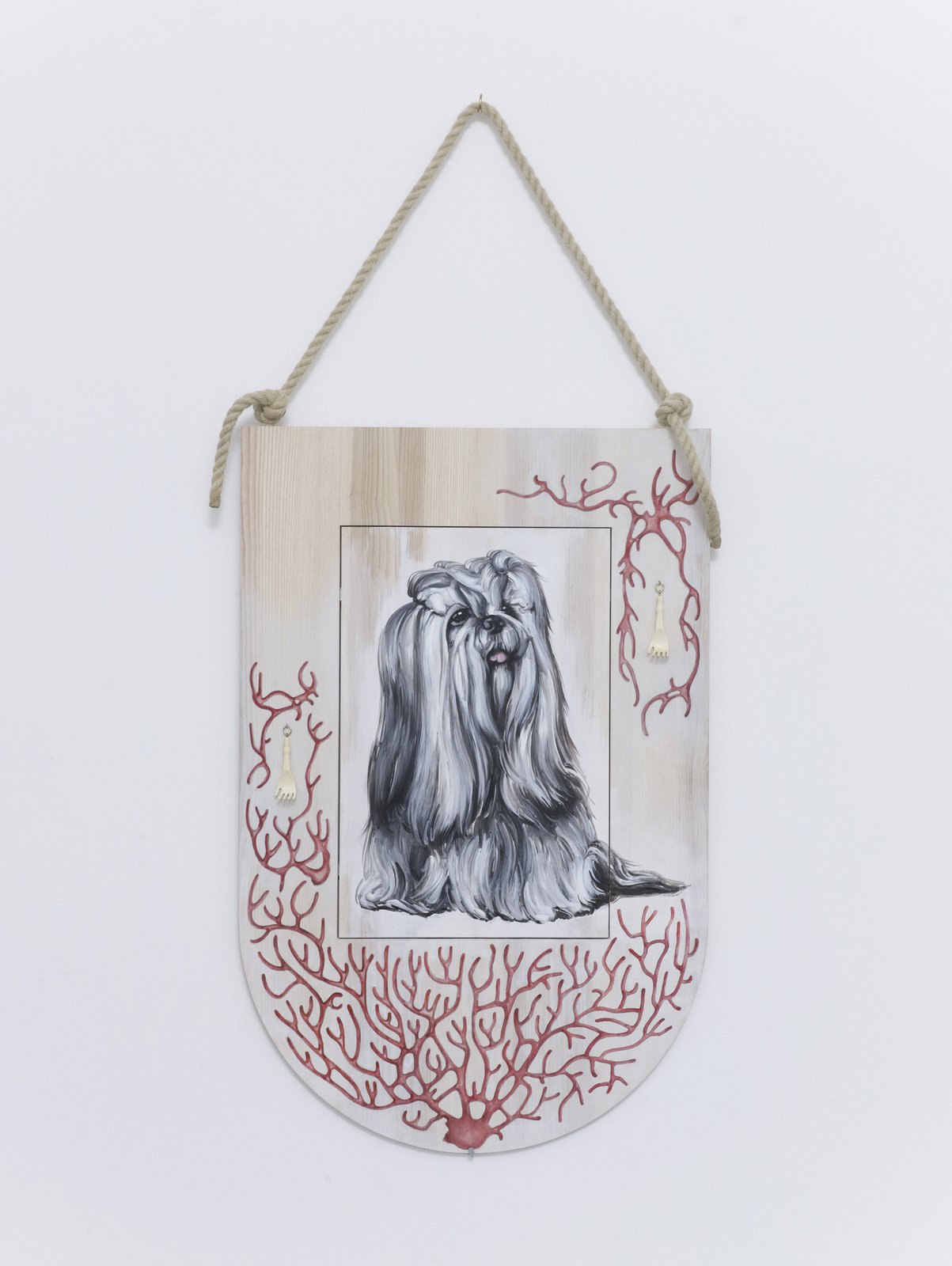
Artist(s): Nika Kupyrova
Exhibition Title: Fake Fur
Venue: RAVNIKAR
Place (Country/Location): Ljubljana, Slovenia
Dates: September 5 – October 19, 2024
Photos by: Marijo Zupanov

